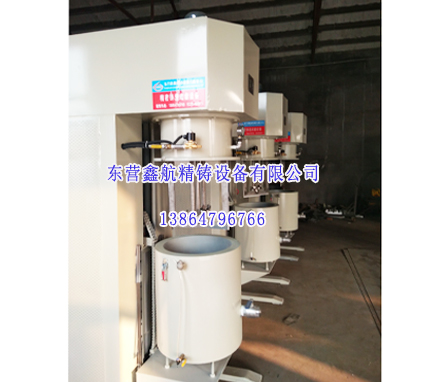
PRODUCTS产品中心
Home >Vacuum mixer
Service Hotline
13864796766

A vacuum mixer is a device that can mix, disperse, and knead materials in a vacuum environment, and is widely used in industries such as batteries, chemicals, food, and pharmaceuticals. The following is a detailed introduction about the vacuum mixer:
1、 Working principle
The vacuum mixer is equipped with a vacuum pump, such as a rotary vane pump, a screw pump, etc., which can extract the air from the mixing chamber before or during the mixing process, achieve the set vacuum degree, and create a low-pressure or even near anaerobic environment. In a vacuum environment, the stirring blade is usually a planetary stirring blade, paddle type, butterfly type, etc., which rotates at high speed to vigorously and uniformly mix, disperse, and knead materials.
2、 Structural composition
1. Mixing tank: It is usually cylindrical or conical in shape, with a volume size determined according to needs. It is generally made of materials such as stainless steel and has good corrosion resistance and sealing properties.
2. Agitator: It is composed of one or more blades. The common ones are planetary agitators, Fried Dough Twists frame agitators, etc. It can fully mix materials through revolution and rotation.
3. Power system: including an electric motor and a reducer. The electric motor provides power, and the reducer is used to adjust the motor speed and provide greater torque to drive the mixer to operate.
4. Vacuum system: mainly composed of vacuum pump, vacuum pipeline, vacuum valve, etc., used to extract air from the mixing tank and form a vacuum environment.
5. Control system: It can accurately control the operating parameters of the equipment, such as mixing speed, mixing time, vacuum degree, etc. It usually uses PLC control and touch screen operation interface, which is convenient for operators to set and monitor.
6. Heating/cooling system: Some vacuum mixers are equipped with heating or cooling devices, which can be controlled by a jacket type mixing tank design and supplied with cooling water or heating medium to achieve temperature control of materials, suitable for various process requirements.
3、 Equipment features
1. Vacuum defoaming: It can effectively eliminate bubbles generated during the stirring process, improve the quality and stability of materials, especially suitable for materials that are sensitive to bubbles, such as lithium battery slurries, electronic adhesives, etc.
2. Uniform mixing: The design of the mixing blade is reasonable, and through the combination of revolution and rotation, the material can be mixed without dead corners in the mixing tank, ensuring the uniformity of mixing.
3. High degree of automation: Adopting PLC control and HMI operation interface, it can achieve multi-stage operation, accurately set mixing speed, time, vacuum degree and other parameters according to different process requirements, and also has various electrical safety designs such as motor overload protection.
4. Strong adaptability: Different types of mixing blades and tanks can be selected according to different material characteristics and process requirements, and heating and cooling systems can also be equipped to meet various production needs.
4、 Application Fields
1. Battery industry: used for mixing and stirring lithium battery slurry, supercapacitor slurry, etc., to ensure the uniformity and no bubbles of the slurry, and improve the performance and quality of the battery.
2. Chemical industry: suitable for processes such as mixing, dispersing, and dissolving materials such as polymers, adhesives, paints, inks, pigments, etc.
3. Food industry: It can be used for mixing chocolate, sauces, dairy products, etc., to prevent oxidation and mixing of materials with air during the mixing process, and to maintain the quality and taste of food.
4. Pharmaceutical industry: used for the preparation of ointments, pharmaceuticals, etc., ensuring uniform mixing of materials and sterile environment, meeting the quality requirements of drug production.